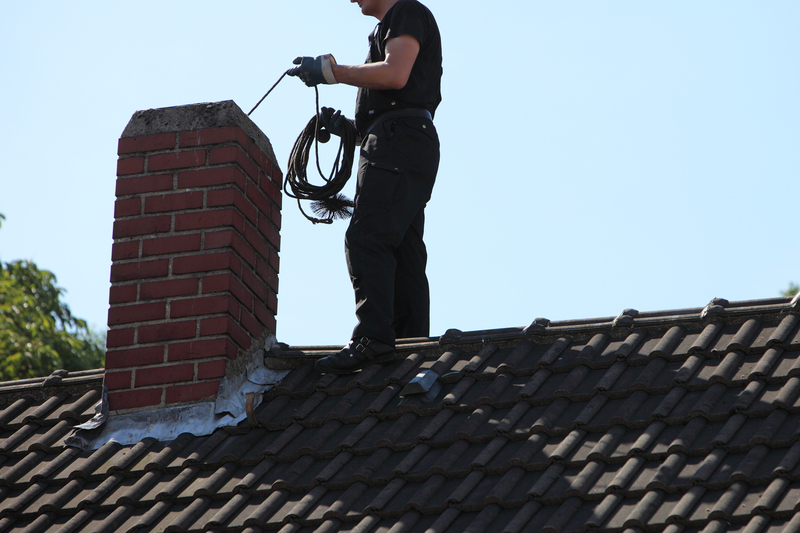Cleaning Natural Fiber Carpets
Posted on 19/05/2025
Natural fiber carpets, such as those made from wool, sisal, jute, and seagrass, bring a sense of warmth, beauty, and earthiness to any space. However, maintaining their freshness and appearance requires specific care and techniques. Here's a detailed guide on cleaning and maintaining natural fiber carpets.
Understanding Natural Fiber Carpets
Before diving into cleaning methods, it's crucial to understand that natural fiber carpets are susceptible to damage from excessive moisture and harsh chemicals. These carpets are generally more delicate than their synthetic counterparts, leading to a reconsideration of traditional cleaning methods.

General Cleaning Tips for Natural Fiber Carpets
- Regular Vacuuming: Vacuuming your natural fiber carpet at least once a week is essential. Use a vacuum with adjustable suction to avoid excessive pulling on the fibers. This method helps remove dirt and debris that could wear down the fibers over time.
- Spot Cleaning: Address spills and stains immediately. Blot the area with a clean, dry cloth instead of rubbing, which could push the stain deeper into the fibers.
- Use of Gentle Cleaners: Opt for mild detergents and avoid harsh chemicals. Test any cleaner on a small, inconspicuous area first to ensure it does not damage the fibers.
Cleaning Specific Natural Fiber Carpets
Wool Carpets
Wool carpets are luxurious yet delicate. Here's how to clean them:
1. Vacuum Regularly: Regular vacuuming is vital to prevent dirt buildup.
2. Handle Spills Promptly: Blot spills with a cloth moistened with water and a bit of mild detergent.
3. Avoid Over-wetting: Excess moisture can damage wool fibers. Use as little water as possible.
Sisal Carpets
Sisal carpets are durable but sensitive to moisture:
1. Immediate Spill Management: Blot spills immediately with a clean, dry cloth.
2. Dry Cleaning: Use dry carpet cleaning powders and vacuum the area thoroughly after application.
3. Avoid Water: Water can cause sisal fibers to shrink or warp.
Jute Carpets
Jute fibers offer a rustic look but are highly absorbent:
1. Regular Dusting and Vacuuming: Prevent dirt from embedding in the fibers.
2. Dry Cleaning: Similar to sisal, opt for dry cleaning powders.
3. Prevent Excessive Moisture: Keep humidity levels low around jute carpets.
Seagrass Carpets
Seagrass carpets are relatively easier to clean:
1. Vacuum Often: Keep the fibers free from dirt.
2. Spot Clean Carefully: Use a mild detergent diluted with water for spot cleaning and ensure thorough drying.
Pros and Cons of Natural Fiber Carpets
Pros
- Eco-Friendly: Biodegradable and sourced from renewable resources.
- Aesthetic Appeal: Adds an elegant, natural look to any interior.
- Durability: When properly maintained, they can last for years.
Cons
- Sensitivity to Moisture: Prone to mold and mildew if exposed to water.
- Higher Maintenance: Requires more cautious and regular cleaning.
- Cost: Often more expensive than synthetic carpets.
Expert Tips for Maintaining Natural Fiber Carpets
- Use Rugs or Mats: Place mats at entrances to reduce dirt tracking.
- Rotate Rugs: Rotate your carpets periodically to ensure even wear.
- Professional Cleaning: Consider professional cleaning once a year to maintain the carpet's integrity.

Takeaways
Maintaining natural fiber carpets involves understanding the characteristics of each type of fiber and using specific cleaning methods tailored to these characteristics. Regular maintenance, prompt spot cleaning, and using gentle cleaning agents are essential practices.
Conclusion
Cleaning natural fiber carpets might require an extra effort compared to synthetic carpets, but the payoff is incredible - a beautiful, sustainable, and long-lasting floor covering. By following the tips and guidelines provided above, you can keep your natural fiber carpets looking pristine and enjoy their natural beauty for years to come. Make sure to balance the pros and cons and implement the best practices to maintain their longevity and aesthetic appeal.







